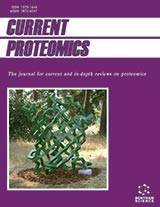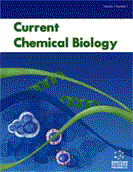Abstract
Microarrays provide the biological research community with tremendously rich, sensitive and detailed information on gene expression profiles. Gene expression profiling and gene expression patterns have been found useful for solving a wide variety of important biological and biomedical problems, including the study of metabolic pathways, inference of the functions of unknown genes, diagnosis of diseased states, as well as facilitating the development of individualized drug treatments through pharmacogenomics. Given the significant impact of microarray gene expression data in biological and biomedical research, this breakthrough technology urgently needs the assistance of advanced computational methods for interpreting and utilizing the raw information. This paper reviews several main research directions and methods in the analysis of microarray gene expression data.
Keywords: Microarrays, gene expression, data analysis, image processing, signal processing, pattern classification, machine learning, computational techniques
Current Bioinformatics
Title: Analysis of Microarray Gene Expression Data
Volume: 1 Issue: 1
Author(s): Tuan D. Pham, Christine Wells and Denis I. Crane
Affiliation:
Keywords: Microarrays, gene expression, data analysis, image processing, signal processing, pattern classification, machine learning, computational techniques
Abstract: Microarrays provide the biological research community with tremendously rich, sensitive and detailed information on gene expression profiles. Gene expression profiling and gene expression patterns have been found useful for solving a wide variety of important biological and biomedical problems, including the study of metabolic pathways, inference of the functions of unknown genes, diagnosis of diseased states, as well as facilitating the development of individualized drug treatments through pharmacogenomics. Given the significant impact of microarray gene expression data in biological and biomedical research, this breakthrough technology urgently needs the assistance of advanced computational methods for interpreting and utilizing the raw information. This paper reviews several main research directions and methods in the analysis of microarray gene expression data.
Export Options
About this article
Cite this article as:
Pham D. Tuan, Wells Christine and Crane I. Denis, Analysis of Microarray Gene Expression Data, Current Bioinformatics 2006; 1 (1) . https://dx.doi.org/10.2174/157489306775330642
| DOI https://dx.doi.org/10.2174/157489306775330642 |
Print ISSN 1574-8936 |
| Publisher Name Bentham Science Publisher |
Online ISSN 2212-392X |
 22
22
- Author Guidelines
- Bentham Author Support Services (BASS)
- Graphical Abstracts
- Fabricating and Stating False Information
- Research Misconduct
- Post Publication Discussions and Corrections
- Publishing Ethics and Rectitude
- Increase Visibility of Your Article
- Archiving Policies
- Peer Review Workflow
- Order Your Article Before Print
- Promote Your Article
- Manuscript Transfer Facility
- Editorial Policies
- Allegations from Whistleblowers
Related Articles
-
The Roles of the Unique Prolyl Isomerase Pin1 in Cancer-Related Viral and Bacterial Infections
Current Molecular Medicine Glioblastoma Targeted Gene Therapy Based on pEGFP/p53-Loaded Superparamagnetic Iron Oxide Nanoparticles
Current Gene Therapy Hypoxia Inducible Factor-1 as a Target for Neurodegenerative Diseases
Current Medicinal Chemistry Annexins as Neuroprotective Agents in the Central Nervous System
Current Medicinal Chemistry - Central Nervous System Agents The Molecular Targets of Cannabinoids in the Treatment of Cancer and Inflammation
Current Pharmaceutical Design Resistance of Cancer Cells to Targeted Therapies Through the Activation of Compensating Signaling Loops
Current Signal Transduction Therapy miR-15b and miR-21 as Circulating Biomarkers for Diagnosis of Glioma
Current Genomics The Hedgehog Knows Many Tricks
Current Drug Targets Hypericin - The Facts About a Controversial Agent
Current Pharmaceutical Design Astrocyte`s RAGE: More Than Just a Question of Mood
Central Nervous System Agents in Medicinal Chemistry Chemical Structure Characteristics and Bioactivity of Small Molecule FAK Inhibitors
Anti-Cancer Agents in Medicinal Chemistry Interconnection of Estrogen/Testosterone Metabolism and Mevalonate Pathway in Breast and Prostate Cancers
Current Molecular Pharmacology Drug Delivery to CNS: Challenges and Opportunities with Emphasis on Biomaterials Based Drug Delivery Strategies
Current Pharmaceutical Design Clearing the Brains Cobwebs: The Role of Autophagy in Neuroprotection
Current Neuropharmacology Human Amnion–Derived Cells as a Reliable Source of Stem Cells
Current Molecular Medicine Adenoviral Vectors for Cancer Gene Therapy
Current Genomics Rotundic Acid Regulates the Effects of Let-7f-5p on Caco2 Cell Proliferation
Anti-Cancer Agents in Medicinal Chemistry Can Breast Cancer Stem Cells Evade the Immune System?
Current Medicinal Chemistry Development of HIV Reservoir Targeted Long Acting Nanoformulated Antiretroviral Therapies
Current Medicinal Chemistry Nanomedicine based on Nucleic Acids: Pharmacokinetic and Pharmacodynamic Perspectives
Current Pharmaceutical Biotechnology

















.jpeg)








